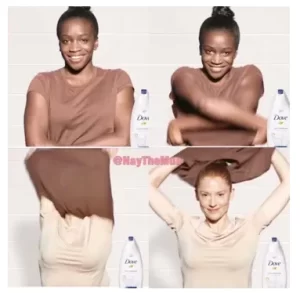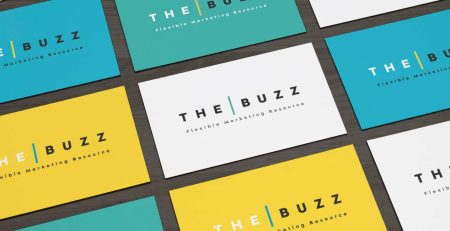What is Diversity Marketing and how marketers can embrace it?
Diversity Marketing
If there is one thing that has become clear over the last few years, it’s that the time to talk about diversity is over. The time to act is now.
For a long time, the marketing efforts of major brands had one thing in common: they were aimed squarely at an older, white, male audience. Marketers were lead to believe, back then, that this was the dominant percentage of the consumer market. Today, however, that kind of approach is outdated.
Today’s consumer is arguably the most diverse in history, which means today’s marketers can no longer craft the kind of narrowly targeted campaigns that worked in the past.
It’s imperative for marketers to embrace diversity marketing.
Here’s an overview of diversity marketing, some strategies that marketers can use to make it the focus of their ongoing efforts, and a few examples of companies who’ve got it right and wrong.
What is diversity marketing?
At its core, the concept of diversity marketing is simple:
Diversity marketing refers to any marketing strategy that recognises the differences within the subgroups of a target market, including: age, gender, disability, religion, ethnicity, and sexual identity.
Within those groups, it’s also possible to further segment the market using factors like marital status, weight, educational attainment, income, and occupation.
In short, diversity marketing is a means of hyper-targeting a marketing campaign in a way that will connect with the widest variety of people within a target market.
How is diversity marketing different from other forms of marketing?
In today’s global marketplace, there are more types or marketing than ever before. There are online channels like email marketing, content marketing and affiliate marketing. Then, there are traditional offline methods like print and television advertising, direct mail and telemarketing.
Strategies to develop effective diversity marketing campaigns
As is the case with many other types of marketing, there’s no single ‘right way’ to develop a diversity marketing campaign.
Here are some approaches:
1. Embrace diversity in your creative team
To create authentic messaging for a diverse market, your creative team must first reflect the market you’re trying to reach.
Embracing diversity hiring practices will support representing the kinds of voices to craft messages that resonate.
Strive to build diversity in the workplace by crafting a team that includes the backgrounds, philosophies, and beliefs of those you’re trying to market to – and solid diversity marketing will flow from it.
2. Make data a centrepiece
Understand the consumer you’re talking to by collecting as much data as possible from this consumer group. Deploy a variety of tactics to get the most accurate picture you can, with both quantitative and qualitative data.
A simple focus group may have prevented Dolce & Gabbana’s Chinese campaign disaster, and some more comprehensive market research may have revealed a better approach.
3. Build from the ground up
A common pitfall in diversity marketing is the tendency to create a unified brand message, and then adapt it to fit each new target group. That kind of cut-and-paste approach will almost always fail. Instead, organic messaging should be unique for each group, recognising their specific needs, desires, and connection with the brand.
4. Understand the language of inclusivity
In creating diversity marketing campaigns, it’s important to know the audience you’re speaking to, but it’s also critical to create messaging that doesn’t exclude.
Doing that requires a detailed understanding of the ways that the language used in a campaign can have the unintended side effect of creating barriers of propagating unconscious biases.
To avoid that, make sure to use inclusive language in all aspects of each campaign to make it both target-specific and welcoming to others. Better yet, learn how to craft a diversity statement that you can use to showcase the efforts you, as a company, are making.
5. Let customers have a voice
One of the best ways to ensure authenticity in a diversity marketing campaign is to allow the customers you’re targeting to have a voice in it.
That means collecting and listening to customer feedback during and after the execution of each campaign to either validate or challenge the effort.
Whenever possible, it’s also a great strategy to empower customers to create content that provides an honest reflection of what the brand means to them.
Doing so not only provides a valuable source of real-world data you can use for future campaigns, but also serves as powerful messaging that’s sure to resonate with others in the target market.
The good, the questionable and the mistakes
Here’s a look at some diversity marketing campaigns that caused a stir for both the right and the wrong reasons:
1. Sport England – This Girl Can
The “This girl can” campaign was created by FCB Inferno for Sport England with the mission to encourage more women to get in to sport and leisure activities. Across the UK. 2 million fewer (14- to 40-year-old) women take part in sport compared with men, despite the fact that 75% say they want to be more active.
“This girl can” took the concept that women are less likely to get involved in sport because of fears of body image judgement and family commitments, and flipped it on its head. Focusing on power, body positive representation and achievement, it was directed by acclaimed female director, Kim Gehrig. It was also sported by a social media campaign that used a tailored algorithm to send encouraging tweets to women who were tweeting about exercise.
The campaign was very successful with results showing that 1.6million women have started exercising and the number playing sport is increasing faster than men.
2. Dove – Facebook Ad
Normally Dove is well known for promoting diversity in the beauty industry, but it’s made a few costly mistakes in recent years. Most notably was a Facebook campaign that showed an African American woman changing into a Caucasian woman after using Dove lotion.
The now deleted advert received immediate backlash, being accused of promoting the message that darker skin was unclean. It received almost 3,000 negative comments with many calling for a boycott of Dove’s products.
Dove pulled the add with the statement: “This did not represent the diversity of real beauty which is something Dove is passionate about and is core to our beliefs, and it should not have happened. We have removed the post and have not published any other related content. We apologise deeply and sincerely for the offence that it has caused.”

3. Pepsi – Protest Ad
Now the stuff of legend, the ad from Pepsi starring Kendall Jenner was criticised for being poorly timed, insensitive and borrowing from black culture. At the height of the Black Lives Matter movement, the ad features Jenner attempting to make peace with police by offering them a Pepsi.
The online backlash was immense with accusations of belittling the social injustices, and white privilege. Among those mocking the advert was Bernice King, who tweeted a photo of her father, civil rights leader Martin Luther King Jr, being confronted by a police officer at a protest march: “If only Daddy would have known about the power of Pepsi” the tweet said.
It was ultimately taken down within 24 hours of its release with the statement: “Pepsi was trying to project a global a message of unity, peace and understanding. Clearly, we missed the mark, and we apologise. We did not intend to make light of any serious issues.”
A diversity focused marketing campaign can have a huge impact if it is done well. The best campaigns are the ones done for the right reasons and those that succeed are more about the message than they are about the brand.
It’s key to ensure you have a clear and positive message and be sure to use diverse focus groups to discuss and critique your ideas. Diversity is important and it’s been proven that diverse workforces are more productive with higher morale.












